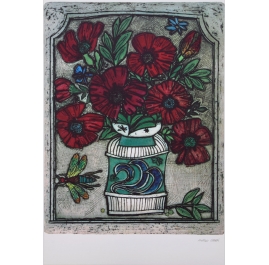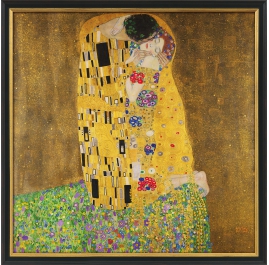Geen producten
Het product is succesvol aan uw mandje toegevoegd
U heeft 0 artikelen in uw mandje. U heeft 1 artikel in uw mandje.
Kunstwerken
-

Vaas Met Rode Bloemen
€198 €220 -10%
Kunstwerken door Kunstenaar: Klimt, Gustav
*1862 in Baumgarten near Vienna as son of an engraver (died 1918). From 1876 he studied at the school of arts and crafts in Vienna, in the painting class of Prof. Julius Viktor Berger. After finishing his apprenticeship in 1883 he founded the Künstlercompagnie, 1897 together with Joseph Maria Olbrich and Josef Hoffmann the Wiener Secession.
At the beginning of his career Klimt was influenced by "Historism", a style he had studied for a long time at the Academy of Arts. With the Vienna Secession Klimt turned to Art Nouveau and became one of the most important painters of his style.
Gustav Klimt united the currents of international Art Nouveau and realised a synthesis of figures and ornaments in a two-dimensional style.
*1862 in Baumgarten near Vienna as son of an engraver (died 1918). From 1876 he studied at the school of arts and crafts in Vienna, in the painting class of Prof. Julius Viktor Berger. After finishing his apprenticeship in 1883 he founded the Künstlercompagnie, 1897 together with Joseph Maria Olbrich and Josef Hoffmann the Wiener Secession.
At the beginning of his career Klimt was influenced by "Historism", a style he had studied for a long time at the Academy of Arts. With the Vienna Secession Klimt turned to Art Nouveau and became one of the most important painters of his style.
Gustav Klimt united the currents of international Art Nouveau and realised a synthesis of figures and ornaments in a two-dimensional style.
-
Klimt, Gustav
De Kus De Kus
Een van de belangrijkste werken van Gustav Klimt, geschilderd in zijn zogenaamde gouden fase, waarin zijn meest populaire werken zijn ontstaan. Magische, religieuze associaties, maar ook die van pure materiële waarde en precipiëteit. Klimt vond modellen in de Byzantijnse schilderkunst, die hij bestudeerde tijdens een reis naar Ravenna (San Vitale).
€0

